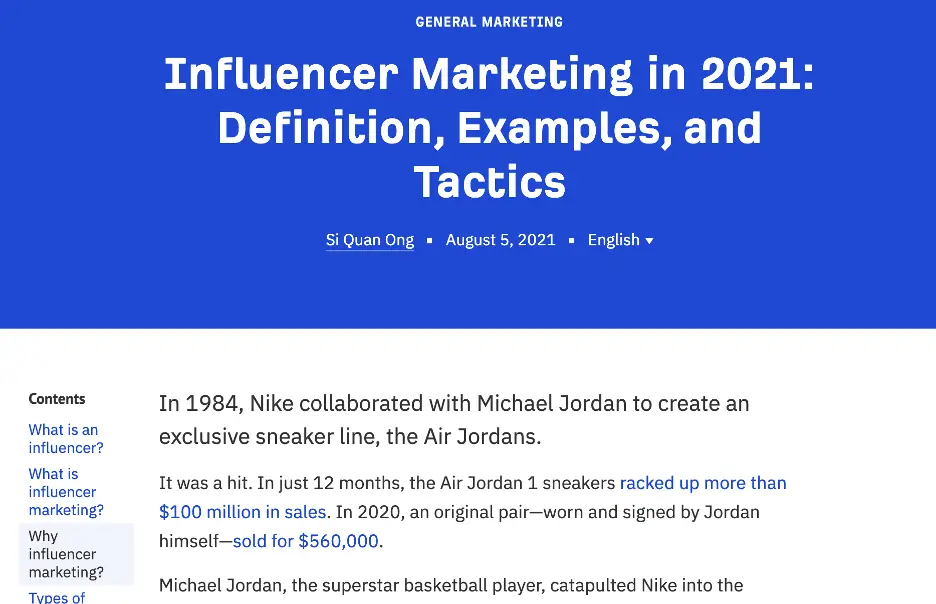Search engine optimization, or SEO, is the process of creating content and improving your website in order to make it more visible on relevant search engine results pages. The right strategy can get you more traffic, increase your brand awareness and ultimately get you more sales.
In this article, we’re going to outline seven different on-page SEO tips that you can use to improve your website. Let’s get started.
Make sure your copy is optimized with the best keywords
One of the most effective ways you can ensure that your website ranks for relevant queries is by optimizing your content with the right keywords.
Start by compiling a list of relevant words and phrases related to your business. Plug them into a tool like Google Keyword Planner and Google will provide you with a list of keywords that people are typing into search engines, based on their competitiveness, or how hard they are to rank for, and their average monthly search volumes. If you incorporate these keywords into your copy properly, you should be able to rank higher on search engine results pages (SERPs) related to what you do. For every web page, you should also identify a primary keyword and get it into the first 100-150 words of text, as this will help ensure that Google pays attention to it.
Let’s take a look at an example of optimized website copy.

Ping Identity, a security software program, has copy that is optimized well on their Single Sign-on solutions page. And their strategy has worked, as this page now ranks on the first page of Google for relevant keywords and phrases with a collective monthly search volume of 10,230.
It’s easy to see how — keywords are incorporated into the title, headers and throughout the body copy in a natural way. On your website, be sure to weave keywords into these elements in a way that’s natural and still helpful to your website visitors.
Need more help? If you would like to outsource any of your keyword research and writing, check out the SEO copywriting services offered by Loganix.
Properly format all of your website content
Formatting your content properly is extremely important. Adding titles, headers and tags to your articles and webpages can give search engines a better understanding of their structure and content.
Many website content management systems have options that can help you easily format things yourself. At the click of a button, you can add titles, H2 tags and the like — this means you don’t have to format this in your HTML.
Here are a few tips to ensure that yours is correctly formatted:
- Use short sentences and paragraphs
- Break up your content into different sections with headings and subheadings
- Use bulleted lists when possible
- Break up large sections of text with imagery
- Simplify any complex sentences
In summary, you need to format your content so it’s as easy to digest as possible. Think short paragraphs, lots of helpful images, short sentences and easy-to-read language.
Ensure your URLs are simple but descriptive
Getting your URL structures right is an underrated but important SEO skill. Using clear, concise keywords can help to tell search engines more about what people will find on your web pages. In short, a reader should be able to tell what your page is about just by looking at your URL.
Here are a few tips for creating SEO-friendly URLs:
- Include keywords in your URLs
- Use hyphens to separate words
- Use lowercase letters
- Keep your URLs short
Let’s look at an example of a website that uses simple and SEO-friendly URLs for inspiration.

Kasala is a furniture retailer based out of Seattle and, on their bedroom furniture category page, you can find a great example of the types of SEO-friendly URLs they consistently use.
Their URL is as follows: kasala.com/catalog/category/bedroom. There is a lot that a typical reader can gather from this URL, and it’s clear you’re looking at the company’s furniture catalog in the bedroom category. Consider dividing the sections of your website into categories like this to keep your URLs clean, organized and SEO-friendly. It can give search engines a lot of extra context about your website and help them to rank your web pages appropriately.
Increase visitors’ dwell time with engaging features
Your website’s dwell time refers to the amount of time that a Google searcher spends on your site before returning to the SERPs. If a website visitor spends a lot of time on your website, Google will take this as an indicator that the web page is helpful, boosting your SEO as a result.
Your bounce rate, however, refers to the percentage of people that click on your website and then quickly leave — when this happens, it tells Google that your website is not helpful to the viewer, which can decrease your rankings on the SERPs.
There are a lot of different ways you can help make your website more engaging, including through imagery, interactive features, video content, and more. All of these elements will help ensure that a website visitor stays on your website longer. Let’s look at a few examples of websites that have added engaging features to their web pages for inspiration.

Zenni, an eyeglasses retailer, has a virtual glasses try-on that keeps website visitors engaged on their website. To use it, a visitor simply uploads an image of themselves and they can see what different Zenni frames would look like on their face shape. It requires a bit of time and is fun to play with so it’s sure to keep visitors engaged! On your website, consider how you could incorporate virtual try-ons — this is especially useful for cosmetics and fashion retailers.

HubSpot, a digital marketing expert, helps keep their website visitors engaged with their video content. In their guide to video marketing, for instance, they have various videos throughout the article that show what types of videos one could create. Additionally, they offer a short video guide that outlines how video marketing has changed over the years. Video content like this not only can help you reach more customers, but can help keep the viewer engaged on a webpage for longer. In your blog posts and articles, consider offering supplementary videos to help further explain a topic and keep a visitor engaged.
Need help marketing your YouTube videos and growing your subscriber base? Check out the guide to YouTube marketing from Study Breaks.
Use your own images and optimize them
There is evidence to suggest that original images are better for SEO than stock images. This means that investing in your own photography or creating your own graphics can be very worthwhile.
A lot of website owners also neglect to optimize their website imagery, even though it can be a powerful way to boost your SEO. Here are a few different tips for image optimization:
- Pick the right file format; PNG and JPEG are the most popular
- Name your image files using relevant, descriptive keywords
- Use hyphens in between words in a file name
- Include captions for your images
- Compress your images so they don’t increase your loading time
- Add alt text to your images that describes the appearance of your image — this improves web accessibility
Add internal links to your content
Internal links are just what they sound like — they’re links that direct a website visitor from one part of your website to another. These are very important for boosting your SEO! When you use internal links, you give Google more context as to how your website is set up as well as what type of content is on your web pages.
You should be internally linking to relevant content, related products and pages, and the like. Let’s look at an example of a business that uses internal links well for inspiration.

Ahrefs, a digital marketing expert, uses internal links to structure their content and lead the reader to other different articles on their blog. In their article on influencer marketing, for instance, they send their readers to all sorts of other articles on their website! This is helpful to the reader and gives search engines more context as to what the website is about and how it is structured. On your website, be sure to include relevant links to internal web pages.
Ensure your website offers a positive user experience
Search engines only want to send their users to websites that they’ll enjoy using; this means that the user experience (UX) of your website matters. As stated earlier, Google wants to send its searchers to the most helpful and relevant websites possible so, creating a positive user experience is part of that and will help improve your SEO.
Here are a few different ways you can help ensure that your website offers a positive user experience:
- Have a fast page loading speed (try to keep it under two seconds)
- Design a helpful and intuitive navigation
- Make sure your website is accessible on mobile devices
- Organize your web pages with headers, titles, bulleted lists and the like
- Compress your images to reduce loading speed
With these strategies in mind, you can help improve the UX of your website.
Summary
SEO is one of the most important aspects of running a successful website in 2021. In this article, we outlined different on-page SEO tips that businesses should follow, including creating a positive UX, optimizing your content with keywords, formatting your website content and more.
Take a look at your website and see what work needs to be done to reach your goals!

Alex Ratynski is a Content Strategist at Loganix, an SEO fulfillment partner that works with agencies and marketers. The company focuses on helping businesses to improve their online visibility, so they can grow and reach their goals. If you enjoyed this article, visit the Loganix blog for more expert advice.













For the reason that the admin of this site is working, no uncertainty very quickly it will be renowned, due to its quality contents.
Good post! We will be linking to this particularly great post on our site. Keep up the great writing
There is definately a lot to find out about this subject. I like all the points you made
Good post! We will be linking to this particularly great post on our site. Keep up the great writing